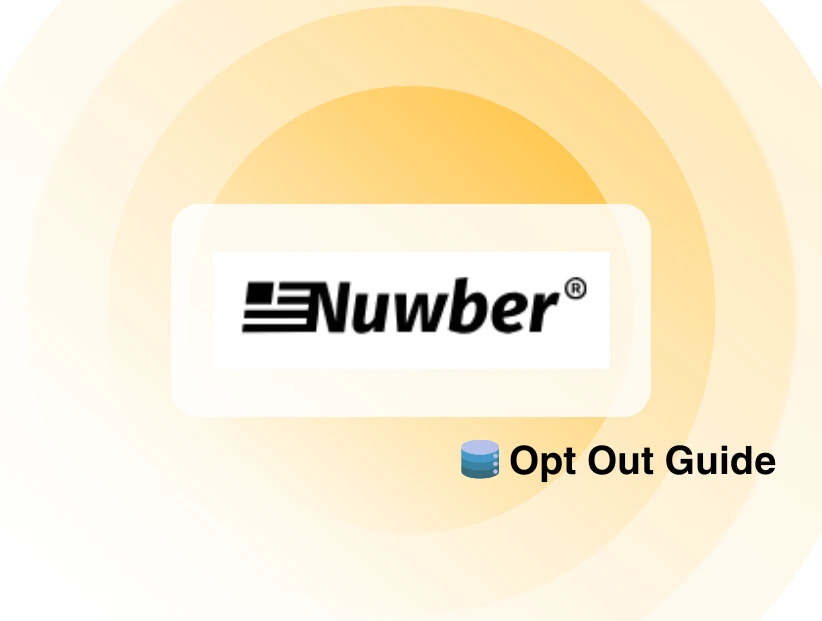Imagine waking up to find that your email address, along with other personal data, has been leaked in a massive data breach. It's a scary thought, but unfortunately, it's becoming more common nowadays. From big companies to social media platforms, many major breaches have exposed millions of email addresses.
In this blog, we’ll learn about some of the most shocking data breaches and show you how easily personal information can fall into the wrong hands. Keep reading this blog to learn how these breaches happened and what you can do to protect your personal information.
Which Big Companies Had Email Leaks?
Over the years, many big companies have faced data breaches that exposed users’ email addresses and other personal information. Here are some of the most famous ones:
Yahoo (2013)
In 2013, Yahoo had a huge data breach that affected 3 billion accounts, leaking names, email addresses, phone numbers, birthdays, and security question answers, making it one of the biggest breaches ever.
Marriott International (2014 to 2018)
From 2014 to 2018, Marriott’s Starwood Hotels was hacked, exposing personal information of around 500 million people, including names, email addresses, phone numbers, passport details, and payment information.
Equifax (2017)
In 2017, Equifax, a big credit reporting agency, was hacked, exposing personal data of 147 million people, including names, Social Security numbers, birth dates, and addresses.
Ticketfly (2018)
In 2018, Ticketfly, a ticket-selling company, was hacked, and personal data of 26 million customers, including names, addresses, email addresses, and phone numbers, was leaked.
Dell (May 2024)
In May 2024, Dell confirmed a data breach that affected 49 million customers, exposing names and order details, but no payment information, emails, or phone numbers, and they acted fast to fix it.
How Do Email Addresses Get Leaked in Data Breaches?
Here's how it usually gets leaked:
Hackers Getting Into Companies’ Databases
Sometimes hackers manage to get into a company’s database, where they can steal personal information, including email addresses.
Phishing Scams
Phishing is when malicious actors send fake emails pretending to be from a trusted source. These emails trick people into clicking on links or visiting websites that steal their email addresses and other personal information.
Malware in Attachments or Links
Malware is a type of dangerous software that can damage your computer. It can hide in things like email attachments or links. If you click on them, the malware can steal your personal information like your email address and send it to hackers.
Using Stolen Login Information to Access Accounts
Hackers use stolen usernames and passwords from old leaks to get into other accounts, especially if people use the same password on different websites, making it easier to steal their personal information, like email addresses.
Scraping Data from Public Websites
Some tools collect public information, like email addresses, from websites or social media, making it easy for hackers to gather personal information quickly.
Employees Leaking Information
Sometimes, an employee or someone working with a company might use their access to steal and share email addresses or other personal information.
Weak Security Practices
If companies have weak security, hackers can easily steal personal information. In the 2015 Ashley Madison hack, work emails were leaked because people used them for personal accounts, making it easier for hackers.
What are Some Big Email Data Breaches?
Here are some of the big data breaches where email addresses were exposed:
Twitter (2021)
In 2021, hackers got into data from 235 million Twitter accounts, exposing email addresses and leaving users exposed to phishing and spam, but passwords weren’t leaked.
Internet Archive (2024)
In October 2024, the Internet Archive, which runs the Wayback Machine, was hacked, and personal data like email addresses, usernames, and passwords from 31 million users was exposed.
National Public Data (2024)
In 2024, a data breach at National Public Data affected over 1.3 million people, exposing their email addresses, phone numbers, and Social Security numbers.
Change Healthcare (2024)
In 2024, Change Healthcare was attacked by ransomware, leaking data from over 100 million patients, including email addresses and medical records.
Snowflake (2024)
In 2024, hackers took advantage of weak security in Snowflake’s cloud storage, affecting big companies like Ticketmaster and AT&T, and exposing personal data, including email addresses.
Krispy Kreme (2024)
In November 2024, Krispy Kreme was hit by a cyberattack that affected its online ordering system, exposing customer data like email addresses, though the full details weren't clear.
How Can I Check if My Email was Leaked?
There are different ways to check if your email has been part of a data breach, but the best way to stay ahead is by using PurePrivacy's Dark Web Monitoring.
It's not like regular breach checkers that only look at known leaks, Dark Web Monitoring keeps an eye on your email address across secret areas of the internet where hackers might share or sell stolen information. This gives you an early alert if your information is in danger.
Enable PurePrivacy’s Dark Web Monitoring
- Install PurePrivacy on your device.
- Log in to the Members Area.
- Go to the Dark Web Monitoring section.
- Select Add Assets to Monitor.
- Add your email, phone number, or other sensitive details.
- Verify via the code sent to your registered number.
- Follow recommended actions if your data is found in a breach.
- Mark the breaches as resolved once you've taken corrective steps.
By using dark web monitoring and these effective tips, you’ll be protected from future problems.
What Should I Do if My Email Was Part of a Data Breach?
Just take these important steps to protect your information:
Change Your Password Right Away
Start by updating your email password to something strong and unique, using a mix of letters, numbers, and symbols, and make sure to change the passwords for any other accounts where you've used the same one.
Enable Two-Factor Authentication (2FA)
Make sure to enable two-factor authentication (2FA) on your email and important accounts for extra security, as it requires a second confirmation, like a code sent to your phone, when you log in.
Check Your Account for Unusual Activity
Look through your email for anything unusual, like emails you didn’t send or changes to your settings, and if something feels wrong, report it to your email provider right away.
Beware of Phishing Emails
Be careful with emails that ask for personal information or seem too good to be true, as hackers often send phishing emails after a breach, hoping you'll fall for them.
Keep an Eye on Your Accounts
Keep an eye on your bank, credit, and important accounts for anything strange, and think about setting up fraud alerts or freezing your credit to protect against identity theft.
Stay Informed with PurePrivacy
Use PurePrivacy's Dark Web Monitoring to protect your email and personal information by checking secret parts of the internet and letting you know if your details are found.
By following these steps, you can keep your personal information safe and avoid more problems from a data breach.
Frequently Asked Questions (FAQs)
-
What is Dark Web Monitoring?

Dark Web Monitoring keeps an eye on secret parts of the internet for your personal information. It’ll alert you if your details are found, so you can take action quickly.
-
Can I stop my email from being leaked?

You cannot stop all breaches, but using strong, unique passwords and enabling two-factor authentication (2FA) can help protect your email. Also, be careful about where and with whom you share your personal information.
-
What should I do if my email is part of a data breach?

If your email is leaked, change your password quickly and turn on 2FA for extra security. Look for any strange activity and stay alert to strange emails, especially ones asking for personal information.
-
How can I keep my information safe online?

You should use strong, unique passwords for each account and enable 2FA. Also, be aware of the links you click and avoid sharing personal information unnecessarily.
Wrapping Up!
Email leaks are a serious issue, and they can happen to anyone. Big companies have already faced this, showing that no one is completely safe. Whether it’s hackers or weak security, your email could end up exposed.
So, it’s important to stay alert and look for any strange activity. Knowing about these breaches helps you understand how easy it is for personal data to be stolen, so always be careful and protect your information.



